You don't need to learn so many "laws".
Initial expression
$$(w+y) \cdot (w \cdot z+w \cdot \overline{z}) \cdot w \cdot y + y$$
First, apply identity for AND
$$(w+y) \cdot (w \cdot z+w \cdot \overline{z}) \cdot w \cdot y + 1 \cdot y$$
Now, grouping (anti-distributivity)
$$\left[ (w+y) \cdot (w \cdot z+w \cdot \overline{z}) \cdot w + 1 \right] \cdot y$$
Now, the absorbing-point for OR reduces everything inside the brackets
$$\left[ 1 \right] \cdot y$$
And finally identity for AND once again
$$y$$
Done.
You were right not to attempt simplification of any subexpressions left of the \$+ y\$
What you have called "absorption law (in two variables)" is a consequence of the absorbing-point for OR, namely
$$\forall x, 1 + x = 1$$
This is the only one of the basic identities of Boolean algebra that is not shared with ordinary algebra (in ordinary arithmetic, addition has no absorbing-point).
There is a similar absorbing-point identity for AND (this one applies to ordinary multiplication of course)
$$\forall x, 0 \cdot x = 0$$
The great thing about these absorbing points is that they absorb any expression, not just a simple variable.
